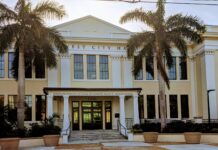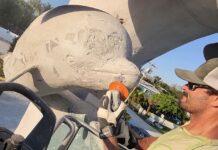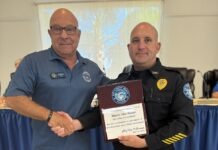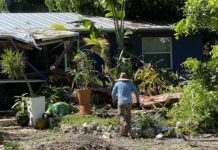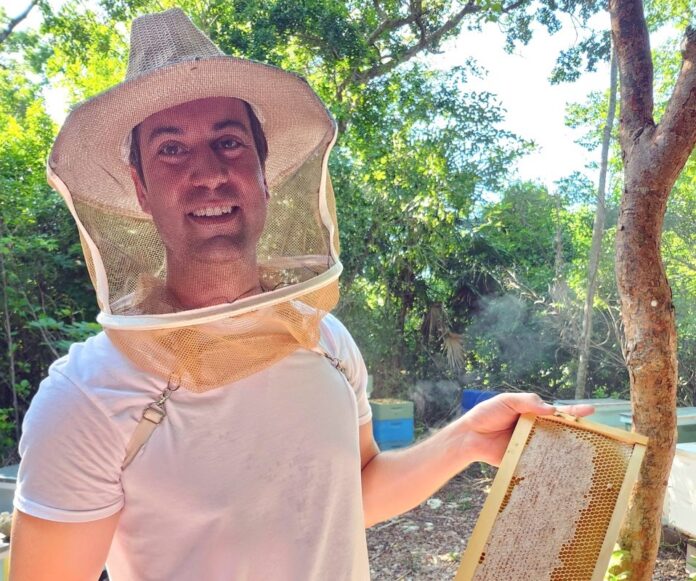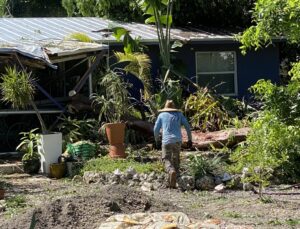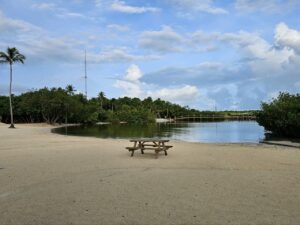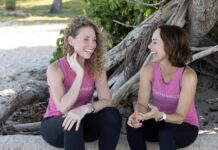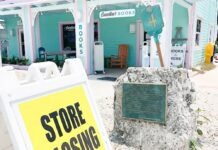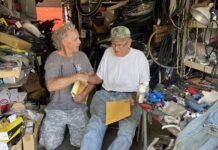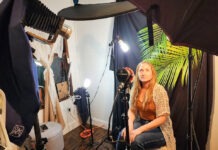Once in a while, people learn about a local business that fascinates them not only for its incredibly delicious product, but also the story and the parallels in everyday life. It tends to make them ponder their existence in the grand scheme of things. Islamorada Honey Company is a perfect example.
Recently, the Keys Weekly met Tayler Russell, owner of Islamorada Honey Company and member of the Islamorada Fire Rescue, to learn more about the honey-collecting operation and other services he provides to the community.
We have 16 colonies in the bee apiary on our property, and another gentleman took care of it for about three to four years. Once, I went out back and got stung. After that, I never paid that much attention to it. One year, he didn’t come back. I took over the apiary this year.
I have worked full-time for the Islamorada Fire Department for three years. I work 24 hours, and then I get two days off. I am also a commercial stone crab fisherman with my dad, and that season is from October to March. The honey season is from March to September. The timing lines up perfectly and keeps me busy year-round.
(Do they sting?) Yes, they do sting; however, I can walk around and they won’t bother me. They fly in and out of the hives, like a runway, while they are working. If you leave them alone and let them do their thing, you will be fine; on the other hand, if you go and shake one of those boxes …
Since it’s my first year doing this, I’ve been figuring it out via “trial and error” and YouTube University. I give it a lot of time because I always try to educate myself. And sometimes, I sit outside in my chair and watch them do their flights.
It’s all about what’s around them. The bees need foliage, hardwood hammock or mangroves and we don’t want people to be bothered by the bees. The proper placement is important, and we are always looking for more properties that could be a good fit for an apiary.
The hardwood hammock is from March to May, then the white mangrove — after that, it can be a bit more of a blend.
During the off-season, it gets quiet, and they live off their reserves. When we take honey out of the colonies, we leave them enough to support themselves and are ready to go for the next season.
There are typically 10,000 to 15,000 bees in one colony. There could be 50,000 to 60,000 bees if a queen is really great and there is an explosion of pollen. (Islamorada Honey Company’s) Colony 2 has produced 100 pounds of honey this season. A colony gets a harvest when they are ready to get a harvest — it varies.
We do have one colony that has been “playing on their phones” all season — Colony 6. We coddled and babied them, but not a drop of honey out of that colony. It comes down to genetics, and the queen gets mated with about 10 drones, and if the genetics are bad, this could happen, so we need to replace the queen. We always want hygienic, productive and gentle bees.
When we replace the queen, the older bees will cycle through, and the new bees will take over. The bees are only about 8 weeks old versus a queen who can live three-four years and doesn’t have to mate again.
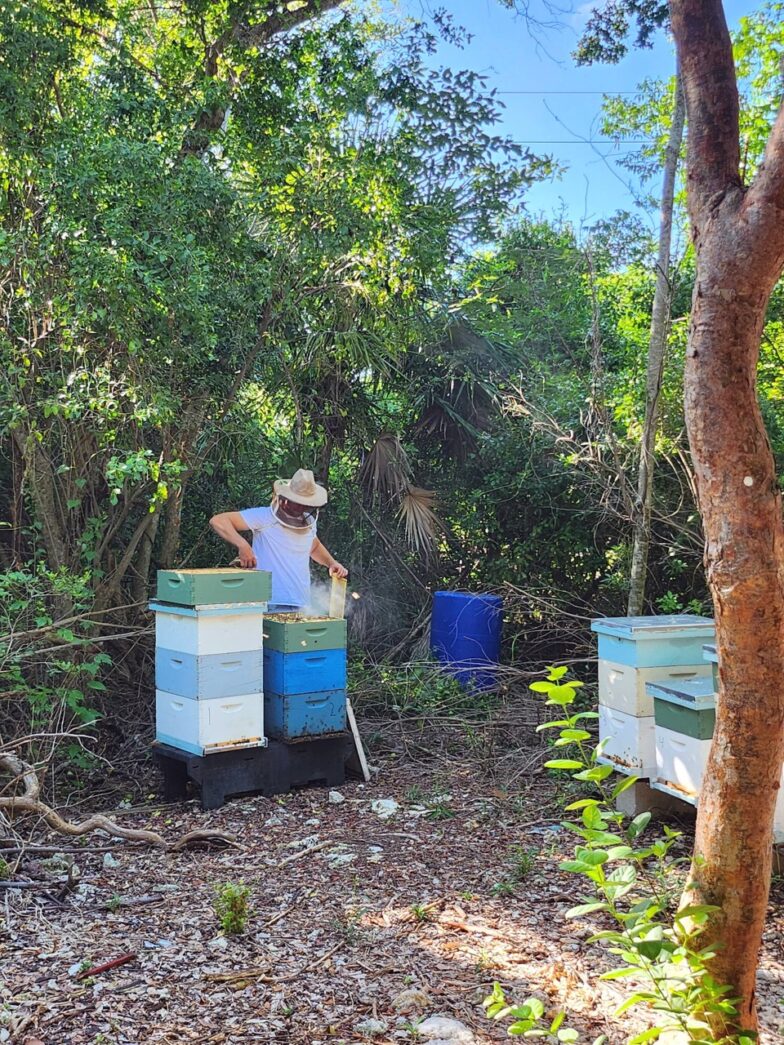
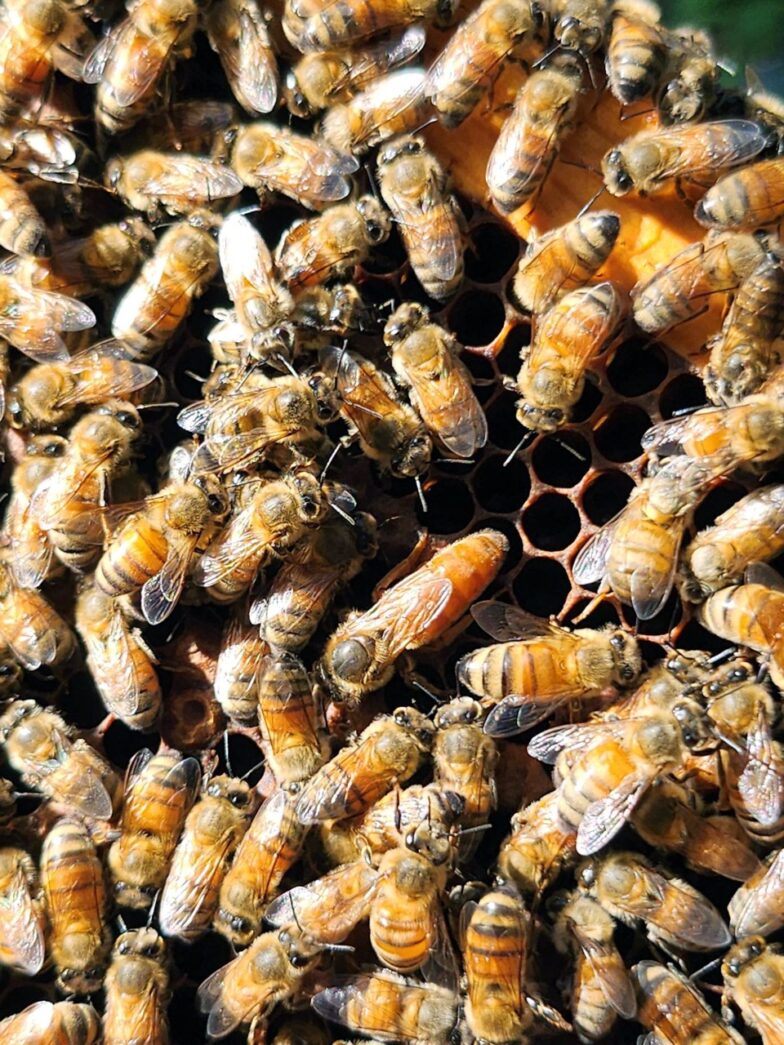
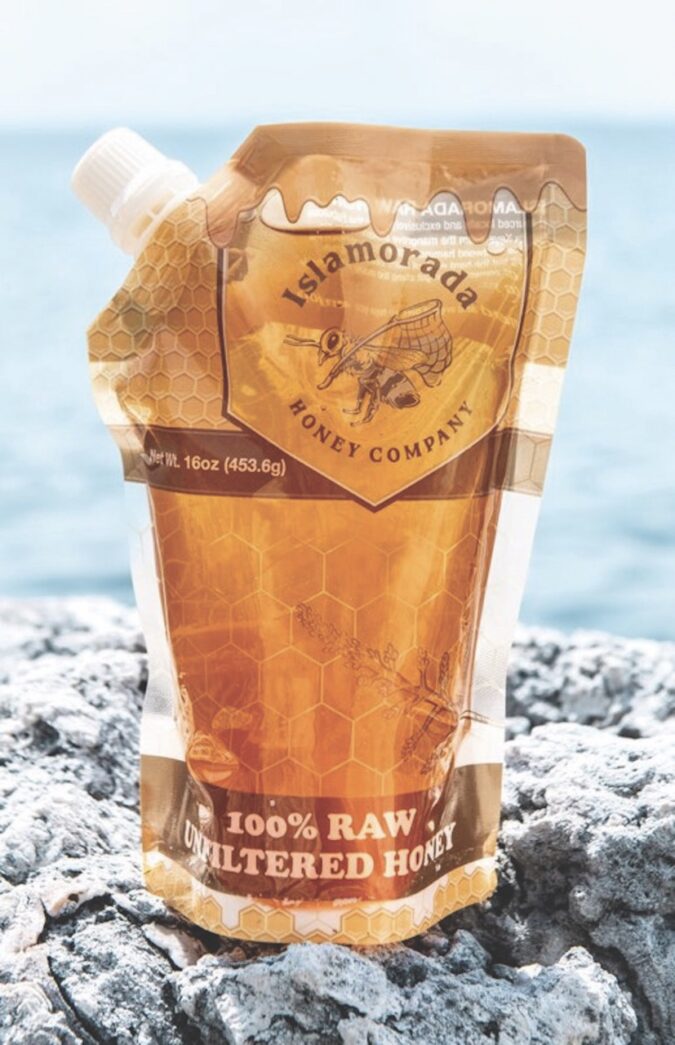
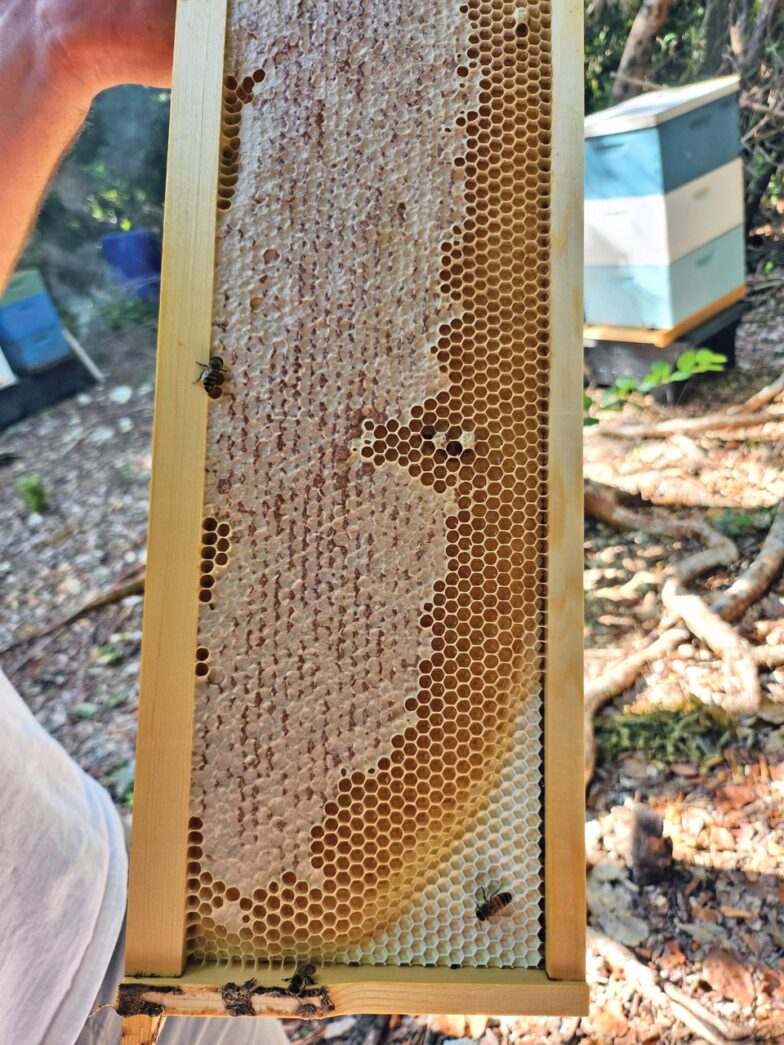
The queen bee looks for an open cell to lay an egg, and the nurse bees will come in and start feeding that egg. Nurse bees help take care of the queen and the fresh larva. When the bees get older, they turn into foraging bees when they can fly.
(How do you collect the honey?) Smoking the bees disrupts the communication process; it disrupts their sense of smell which is about 100 times higher than a normal person. The smoke throws them off without harming them.
Then we can take out the plastic tray (frame) in the colonies. The frames have a foundation, aka blueprint, to draw the comb and fill with nectar. The bees dehydrate it down, which gives the honey, and then they wax cap it. We cut off the cap and put it in a honey distractor which takes out the honey and then put it back in the colony. We do a little filtering in case of any partials, but that’s it — it’s as raw and unfiltered as it can get.
In addition to selling the honey, we also provide a beehive removal and relocation service from the property. After smoking the colony, we find the queen, put her in a little queen cage (which looks like a hair clip) and then the rest of the bees start alerting everyone and follow her to the box. It only takes a few hours, but I give them some time to integrate and then seal up the holes. We don’t try to hurt or kill them or hire an exterminator who just sprays the bees at the entrance, which doesn’t take care of the hive.
As a family operation, my mom, Mary Russell, helps with filming and is the best mom in the whole wide world. My fiancée, Ariel Haber, also helps and my dad, Rich Russell, has come to some bee relocations and recently helped with his knowledge on how to get to the area.
It’s important to educate people and take care of the land too. Not only are we keeping bees and making honey, but it keeps the ecosystem going too.
It’s been a great learning experience every single step of the way.
Those interested in purchasing honey or are interested in being a beekeeper or having a hive relocated can connect with Islamorada Honey Company via Instagram or Facebook, @islamoradahoneycompany, and islamoradahoneycompany.com.
